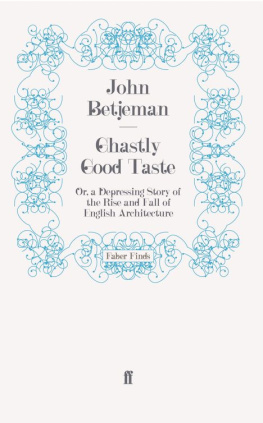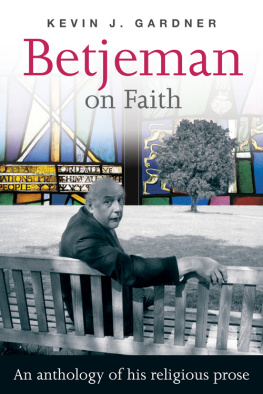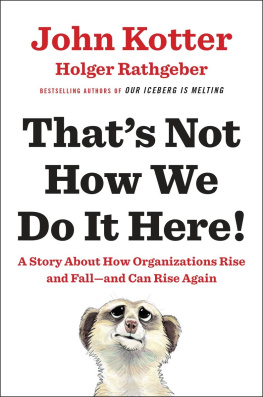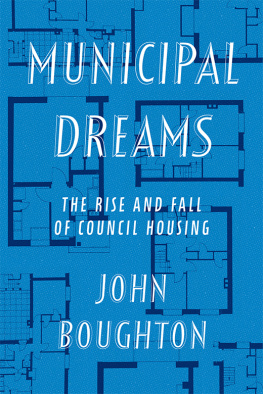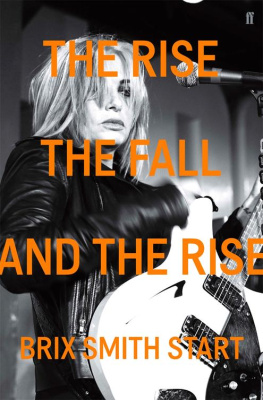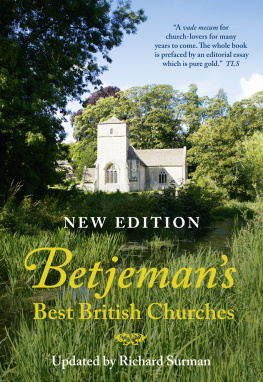John Betjeman - Ghastly Good Taste: Or, a Depressing Story of the Rise and Fall of English Architecture
Here you can read online John Betjeman - Ghastly Good Taste: Or, a Depressing Story of the Rise and Fall of English Architecture full text of the book (entire story) in english for free. Download pdf and epub, get meaning, cover and reviews about this ebook. year: 2011, publisher: Faber & Faber, genre: Religion. Description of the work, (preface) as well as reviews are available. Best literature library LitArk.com created for fans of good reading and offers a wide selection of genres:
Romance novel
Science fiction
Adventure
Detective
Science
History
Home and family
Prose
Art
Politics
Computer
Non-fiction
Religion
Business
Children
Humor
Choose a favorite category and find really read worthwhile books. Enjoy immersion in the world of imagination, feel the emotions of the characters or learn something new for yourself, make an fascinating discovery.
- Book:Ghastly Good Taste: Or, a Depressing Story of the Rise and Fall of English Architecture
- Author:
- Publisher:Faber & Faber
- Genre:
- Year:2011
- Rating:3 / 5
- Favourites:Add to favourites
- Your mark:
- 60
- 1
- 2
- 3
- 4
- 5
Ghastly Good Taste: Or, a Depressing Story of the Rise and Fall of English Architecture: summary, description and annotation
We offer to read an annotation, description, summary or preface (depends on what the author of the book "Ghastly Good Taste: Or, a Depressing Story of the Rise and Fall of English Architecture" wrote himself). If you haven't found the necessary information about the book — write in the comments, we will try to find it.
Ghastly Good Taste: Or, a Depressing Story of the Rise and Fall of English Architecture — read online for free the complete book (whole text) full work
Below is the text of the book, divided by pages. System saving the place of the last page read, allows you to conveniently read the book "Ghastly Good Taste: Or, a Depressing Story of the Rise and Fall of English Architecture" online for free, without having to search again every time where you left off. Put a bookmark, and you can go to the page where you finished reading at any time.
Font size:
Interval:
Bookmark:
ToPenelopeChetwode
Why, child, the only hope thou hast
Lies in they masters want of taste;
For shoud his lingring stay in London
Improve your taste, you must be undone
William Whitehead
Poems on Several Occasions, 1784
The author is indebted to so many persons and friends for so much conversation and advice that he can but specify some whose direct influence and help make it possible for him to express particular gratitude. First, his host and hostess in Westmeath have caused this book to exist. Next, Mr Peter Fleetwood -Heskeths brilliant drawing at the end of the book is far clearer and far more important than the text. Next, from de Cronin Hastings came much help, though not as much as in former times. Mr Frederick Etchells, F.R.I.B.A., kindly played Batty Langley to the authors Lord Ongley. Mr Arthur Waugh gave valuable assistance. The author acknowledges the interest of his father in looking over the proofs, for his advice, coupled with that of a friend of high position and peculiar appearance, did much to rid the text of some of its prejudices.
Mr E. W. Hamilton and Mr W. E. Levear, of Messrs Chapman & Hall, and Mr A. E. Doyle, of Gravesend, and Lady Mary St Clair Erskine, of Horsham, have been of great assistance over the format and typography. Finally, the author is indebted to Mr C. S. Lewis, of Oxford, whose jolly personality and encouragement to the author in his youth have remained an unfading memory for the authors declining years.
I wrote this book thirty-eight years ago. I was twenty-six, in love, and about to be married. When Anthony Blond said he would like to reprint it, I thought I had better read it, and he kindly sent me a copy. I am appalled by its sententiousness , arrogance and the sweeping generalisations in which it abounds. The best things about it are the fancy cover, which I designed myself from display types found in the capacious nineteenth-century premises of Stevens, Shanks & Sons, 89 Southwark Street, type founders. In their collection they discovered for me the little railway train and the founts which in descending order are Ultra Bodoni, Argentine, Bodoni, Rustic. I have an idea that the sans-serif outline capitals in which the word Illustration is written, is a Grotesque. The black letter for Mr Fleetwood-Hesketh is Westminster. The text of the book is in a modern face, because most books on architecture in the early thirties were printed in a sans-serif a long way after Gill, and to print a book of this size and to use an italic running commentary at the top of each right-hand page was hopelessly old-fashioned.
Display types were generally sans-serif and title-page and cover had to be pure and empty-looking, and nothing quite in the middle, so as to show that it was up to date.
The real point of the book was the Street of Taste, or the March of English Art down the Ages, specially drawn by Peter Fleetwood-Hesketh, with traffic to match. This pull-out was also an old-fashioned thing to do, and the style of architectural caricature was deliberately based on Pugins caricatures in his book Contrasts (1836). This pull-out was what caused people to buy the book, and looking back at it, I regard it as far less modish and much more balanced than the text. Mr Fleetwood-Hesketh has kindly continued the depressing theme up to 1970.
I thought it might be helpful to attempt an aesthetic autobiography up to the date when this book was published. Most people who were small children when the 1914 war started and with an interest in buildings, will have had similar aesthetic experiences. I have thought it best to be extremely personal at the risk of seeming egotistic, because I can see no other way of explaining the state of mind which enabled me to dash out this book in something like a white-hot fury.
My own interest started in seeking out what was old. When the guide told me that this was the bed in which Queen Elizabeth slept, I believed him. When owners of country cottages in Suffolk told me their cottage was a thousand years old, I believed them too. I thought that this or that church was the smallest in England, and that secret passages ran under ruined monasteries, so that monks could get to the nearest convent without being seen. The older anything was the lovelier I thought it. I was quite uncritical, as are hundreds of thousands of my fellow citizens in the same happy state of childlike innocence about architecture.
The next stage of interest started at about the age of twelve. This was a preoccupation with the different styles of mediaeval parish churches. It goes with detective fiction, for it is great fun discovering a half-hidden Norman arch or a blocked-up squint or a banner-stave locker (whatever that may have been). Saxon was crude and rude and scarce, Norman was strong and bold like William the Conqueror and easy to recognise, because the arches were round. The next style, Early English, was the purest, because it was the beginning of Gothic, and things are always pure when they begin. The next style was the curvilinear and geometrical tracery and foliated capitals of Decorated, the middle style and generally regarded as the perfection of Gothic. For when things are in their middle they are perfect. After this came the debased but omnipresent Perpendicular style, which was to be found in all the churches I knew, particularly in those of Norfolk and Cornwall.
Uncritically in these days I loved every Tudor manor house and thatched cottage on a green and every timber-framed tile-hung farmhouse with brick chimney stacks. Doubtless many a church which I admired as the perfection of Gothic, that is to say, Decorated, was really Victorian, while most of the thatched and tile-hung houses and Tudor manor houses were Victorian too. I could not tell the fake from the genuine.
I think a sense of architecture in the round comes with puberty. It is then that one begins to appreciate proportion and shape and lines of construction. At my private school, Lynams, at Oxford, I was lucky enough to be allowed to go off with friends bicycling in the limestone villages of Oxon., and also to visit the colleges in the University itself. By the time I had reached my public school at Marlborough in Wiltshire, the absence of limestone, the comparative paucity of parish churches within bicycling distance, the bare chalk downs, beechwoods, brick cottages and thatched barns, did not have the appeal of either Oxford and the Cotswolds, or the tall flint wool churches of Norfolk, or those granite and round-roofed boat-builders jobs, the churches of Cornwall. Life was rougher, food was worse, and fears were greater.
Architecture was hardly mentioned at Marlborough and it was not until I was over sixteen that I became aware of it as part of the school surroundings. Then there were two influences working in contrary directions. There was that good, delightful and hospitable man Colonel Christopher Hughes, the art master. He treated us as adults and led us off on sketching expeditions to villages which were then remote, down chalky and flinty lanes rarely invaded by the motor car. Here we would sit in front of a thatched barn, a haystack or a row of summer elms and make a rough outline in pencil of what we saw, before applying the watercolour. Wet the whole surface for sky, apply cobalt and ultramarine but no prussian blue, and if you want a grey cloud add light red to the ultramarine while the surface is still wet. Now apply blotting paper or a handkerchief to get the patchy effect of clouds. The sky should be a deeper blue at the top, paling as it reaches the horizon. When the paint dried the effect was indeed often quite remarkable. After that one painted the rest of the picture using a light yellow first where it was needed, either on its own or as a background to greens. Never use artificial greens, like green bice, but make your own out of combinations of yellow and blue. All this industry was accompanied by talk about anything except sex. Then there was tea in a cottage with Wiltshire lardy cake. I was never much good at watercolours. John Edward Bowle, the historian, was much the best, and won the Art Cup in 1924. He could paint the downs, big elm trees heavy with shadow and thatched cottages, worthy of an R.S.W. or even an R.A. These sketching expeditions taught me to appreciate the importance of the setting of a building, the shapes of trees, and the effects of light in different weathers, and at different times of day. I still secretly thought that if anyone had invented colour photographyand they had not invented it thenthere would be no need for us to do watercolours. Constable and Arnesby Brown, my fathers two favourite landscape artists, I thought had they known about colour photography, would have used the camera instead of going to all that trouble with oil paint. As for the pre-Raphaelites, obviously they would have used colour cameras.
Font size:
Interval:
Bookmark:
Similar books «Ghastly Good Taste: Or, a Depressing Story of the Rise and Fall of English Architecture»
Look at similar books to Ghastly Good Taste: Or, a Depressing Story of the Rise and Fall of English Architecture. We have selected literature similar in name and meaning in the hope of providing readers with more options to find new, interesting, not yet read works.
Discussion, reviews of the book Ghastly Good Taste: Or, a Depressing Story of the Rise and Fall of English Architecture and just readers' own opinions. Leave your comments, write what you think about the work, its meaning or the main characters. Specify what exactly you liked and what you didn't like, and why you think so.

